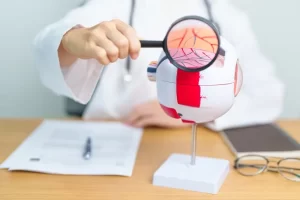
What Is Otoplasty?
Otoplasty, also known as cosmetic ear surgery or ear pinning, is a procedure designed to enhance the appearance of the ears by correcting protrusion, reshaping misshapen ears, or addressing congenital deformities. The surgery involves making incisions behind the ears to reposition or reshape the cartilage, resulting in a more balanced and aesthetically pleasing appearance. Typically performed under general anesthesia, otoplasty can last one to three hours, depending on the case’s complexity. After the surgery, patients must wear a protective bandage or headband to support the ears and prevent movement during healing. While otoplasty is generally safe when performed by a skilled surgeon, adhering to proper ear protection is crucial for ensuring a successful outcome and minimizing the risks of complications.
Understanding The Importance Of Ear Protection During Otoplasty
During cosmetic ear surgery, your ears are exposed to surgical instruments, anesthesia, and manipulation, increasing the risk of hearing complications and infection. If proper precautions are not taken, the delicate inner ear structures could be damaged, potentially leading to hearing loss or other complications. Additionally, any incisions during the procedure may become infected if not carefully protected, resulting in inflammation, pain, and delayed healing. Ensuring adequate ear protection minimizes these risks and promotes a smoother recovery process.
Risks And Complications Of Not Using Ear Protection During Otoplasty
Neglecting ear protection after otoplasty can lead to severe complications. Potential risks include hearing loss due to damage to the inner ear structures, exposure to loud noises, and increased risk of infection if bacteria enter the surgical site, causing inflammation or delayed healing. Additionally, inadequate protection can impair the surgery’s success by allowing excessive movement or trauma to the ears, potentially leading to unsatisfactory results that may require further corrective procedures.
Types Of Ear Protection Options Available For Otoplasty Patients
For ear protection after otoplasty, consider surgical bandages for initial use, custom-made ear guards for a secure fit, noise-canceling earmuffs to limit noise exposure, ear plugs to prevent accidental bumps, and specialized devices like custom-molded shields if prescribed by your surgeon. Each option provides specific benefits based on your needs and the complexity of the procedure, so follow your surgeon’s recommendations for optimal healing.
How To Choose The Right Ear Protection For Otoplasty
When selecting ear protection for your otoplasty, prioritize comfort and a secure fit to avoid irritation. Ensure durability to protect against pressure, impact, and noise. Follow your surgeon’s recommendations on type and brand, and choose easy-to-use, easy-to-clean options for consistent use. Lastly, ear protection must be compatible with other post-operative care, like bandages or ointments, to support proper healing and achieve the desired results.
Proper Care And Maintenance Of Ear Protection After Otoplasty
Proper care and maintenance of ear protection after otoplasty are crucial for adequate recovery and preventing complications. First, regularly clean and disinfect the ear protection according to the manufacturer’s instructions to prevent bacteria buildup. Handle the ear protection gently to avoid compromising its integrity. Store it in a clean, dry place when not in use to maintain its condition. Inspect the ear protection regularly for wear and replace it as recommended by the manufacturer or your surgeon. Lastly, adhere to the wearing schedule provided by your surgeon for consistent protection. Following these guidelines ensures your ear protection remains effective, supporting a smooth and successful recovery.
Common Misconceptions About Ear Protection During Otoplasty
Several things need to be clarified about ear protection during and after otoplasty that can lead to suboptimal outcomes. Many believe ear protection is only necessary during surgery, but it’s crucial throughout recovery to prevent trauma and infection. Another myth is that any ear protection will do, but only the surgeon’s specific recommendations are safe and effective. Some think ear protection is optional, yet it prevents complications like hearing loss and infection. Finally, the need for ear protection extends beyond the initial healing period, as the ears remain vulnerable for some time, and continued protection ensures the best results and prevents long-term issues.
Tips For Maintaining Ear Health After Otoplasty
After otoplasty, prioritize ear health by following your surgeon’s instructions on ear protection and post-op care. Avoid loud noises using noise-canceling earmuffs, and prevent physical trauma by avoiding pressure-inducing activities like wearing hats or sports. Maintain hygiene with gentle washing, and watch for infection signs such as redness or swelling, contacting your surgeon if needed. Attend all follow-ups to monitor healing and gradually resume gentle activities to support recovery once approved. These steps ensure a smooth recovery and minimize long-term complications.
The Role Of Ear Protection In The Healing Process After Otoplasty
Hearing protection is crucial for a smooth recovery after otoplasty. During the initial healing phase, surgical bandages or custom-made ear guards immobilize the ears, preventing trauma and infection. This protection helps reduce complications such as inflammation, pain, and delayed healing.
As recovery progresses, noise-canceling earmuffs are recommended to shield sensitive inner ear structures from loud sounds and prevent further damage. Specialized devices like custom-molded ear shields also help maintain the desired ear shape and position.
Ear and hearing protection should be prioritized to support healing and enhance the likelihood of achieving the desired outcomes. Adhering to the surgeon’s recommendations and adequately caring for ear protection devices are essential for a successful recovery.
Conclusion: Ensuring Long-Term Ear Health Through Proper Ear Protection During And After Otoplasty
In conclusion, ear protection during and after otoplasty is essential to prevent damage to the delicate ear structures. Proper precautions, such as surgical bandages, custom-made ear guards, and noise-canceling earmuffs, help minimize hearing loss and infection risks. Adhering to the surgeon’s instructions and maintaining ear protection devices are crucial for a smooth recovery. Patients can ensure long-term ear health by prioritizing ear protection and achieving the best aesthetic and functional outcomes from their otoplasty. This proactive approach safeguards the surgical site and one’s ability to hear and enjoy life.







